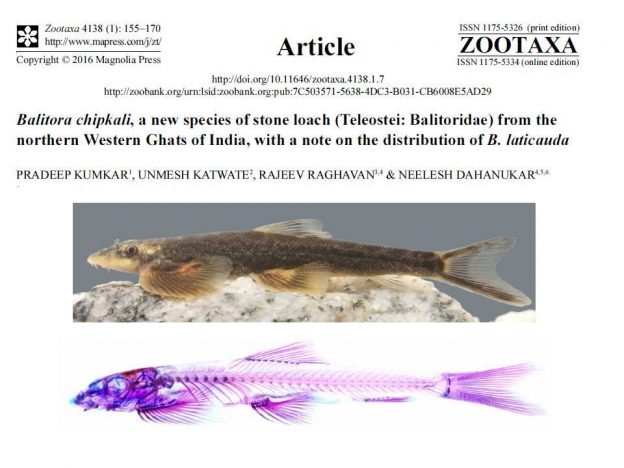New Stone Loach from Western Ghats
Balitora chipkali, a new species of stone loach, is described from the westward-flowing Astoli tributary of the Kali River system in the northern part of the Western Ghats, India. The species differs from its congeners in a combination of characters that includes: a single pair of maxillary barbels; a large eye, of diameter greater than 15% head length (HL); snout length less than 4 times eye diameter; gape of mouth less than 30% HL; upper lip with 9–12 papillae in first series and 3–8 papillae in second series; flattened body, of depth less than 15% standard length; caudal-peduncle length less than three times its depth, 66–68 lateral line scales, 11 caudal vertebrae excluding compound centrum, third infraorbital sensory canal tube straight; and a distinct color pattern with almost round 7 dorsal saddles not reaching lateral irregular crossbar markings. Balitora chipkali forms a monophyletic group with B. laticauda as its sister taxon in a phylogeny based on a concatenated cytochrome b (Cytb) and cytochrome oxidase subunit 1 (COI) gene fragments. Raw genetic distance between B. chipkali and B. laticauda was 1.9–2.2% based on COI and 3.4–4.3% based on Cytb partial gene sequences, which was far more than the intra-species variation in widely separated populations of B. laticauda. Based on molecular and morphological analysis, we also provide new locality records for B. laticauda and delimit its distribution to eastward-flowing tributaries of the Krishna River system in the northern Western Ghats.

